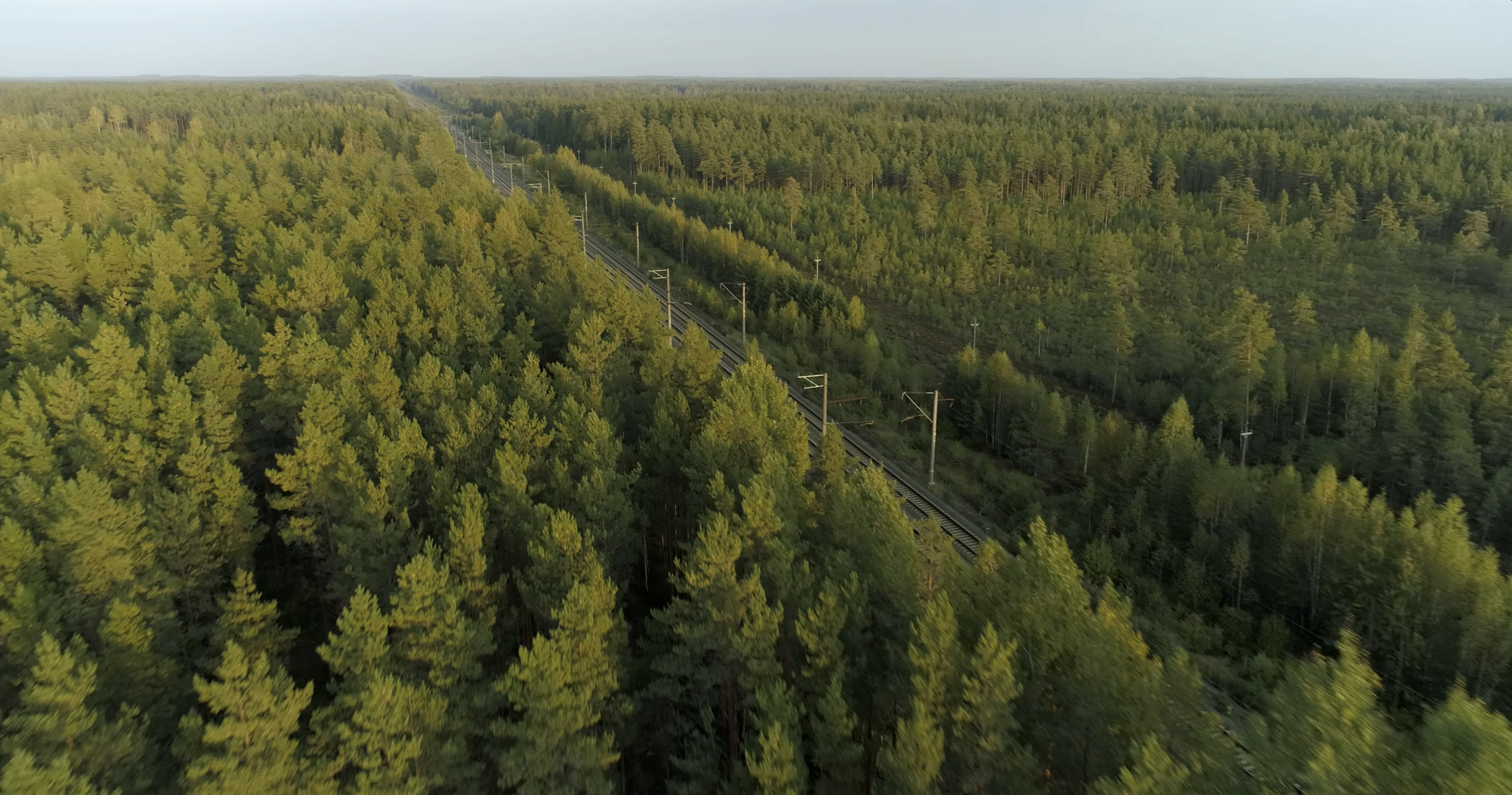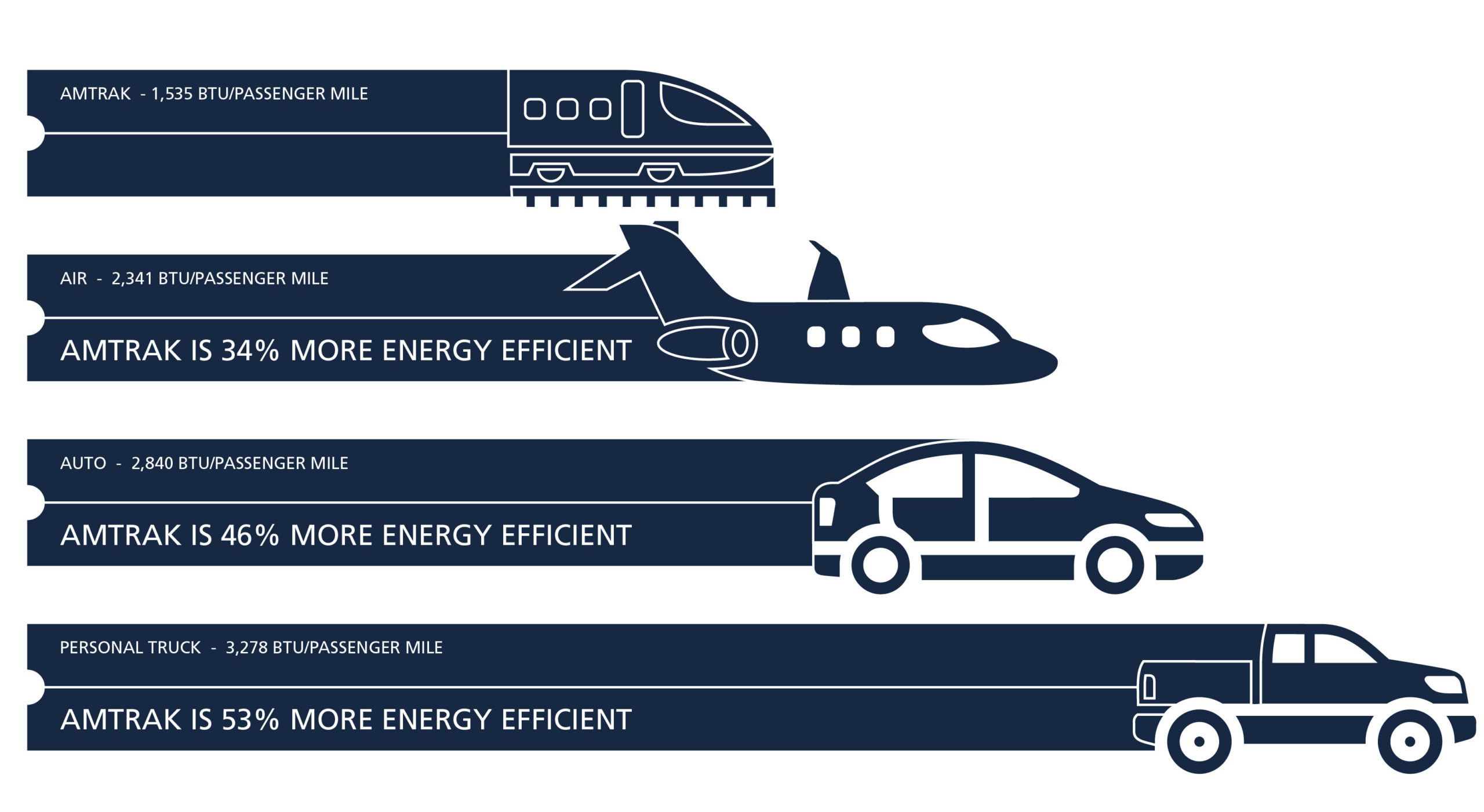The Sustainable Choice for Travelers
Taking the train is not only the most scenic way to discover destinations but also one of the most environmentally friendly ways of traveling! When compared to cars and airplanes, trains emit between 66 and 75 percent less carbon. Trains are far more sustainable in terms of energy consumption, use of space, and noise levels, trains are far more sustainable too.
The Sustainable Choice for Travelers
Taking the train is not only the most scenic way to discover destinations but also one of the most environmentally friendly ways of traveling! When compared to cars and airplanes, trains emit between 66 and 75 percent less carbon. Trains are far more sustainable in terms of energy consumption, use of space, and noise levels, trains are far more sustainable too.
Amtrak
Amtrak, the American national rail operator has made a clear commitment to sustainability over the past decade.
According to the 2021 U.S. Department of Energy Data Book, Amtrak is 46% more energy-efficient than traveling by car and 34% more energy-efficient than domestic air travel. Amtrak has significantly reduced its carbon footprint by taking measures to reduce fuel consumption, such as installing new forms of green technology and adapting energy-conserving practices. These practices include the installation of lighter train cars, the use of diesel fuel, a regenerative braking system, and an operating system that reduces time spent idling. According to Climate Counts, a nonprofit organization that grades companies according to their environmental practices, Amtrak is a “Striding” company. This means that they have consistently improved on their environmental record, and are a good choice for those looking to support eco-friendly businesses.
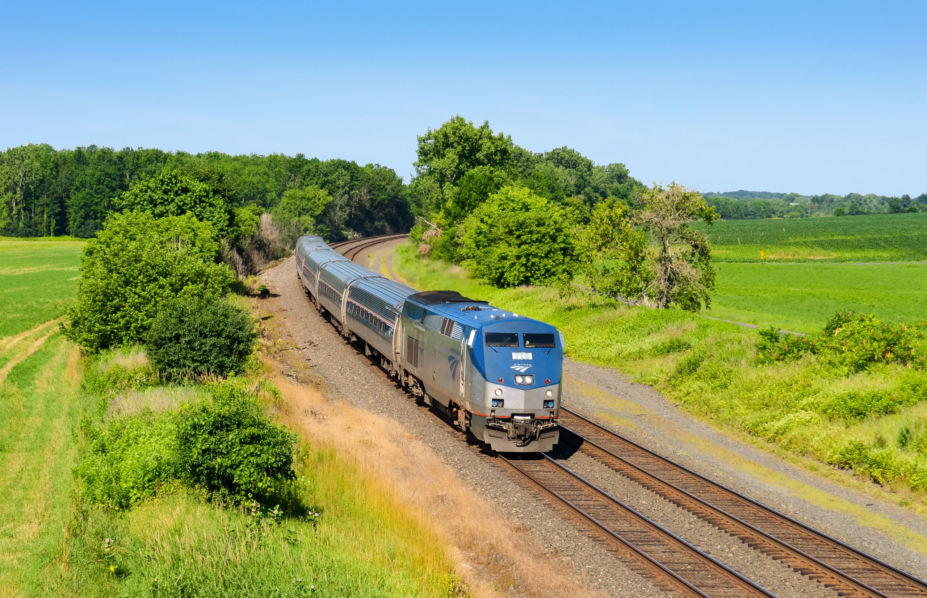
Amtrak
Amtrak, the American national rail operator has made a clear commitment to sustainability over the past decade.
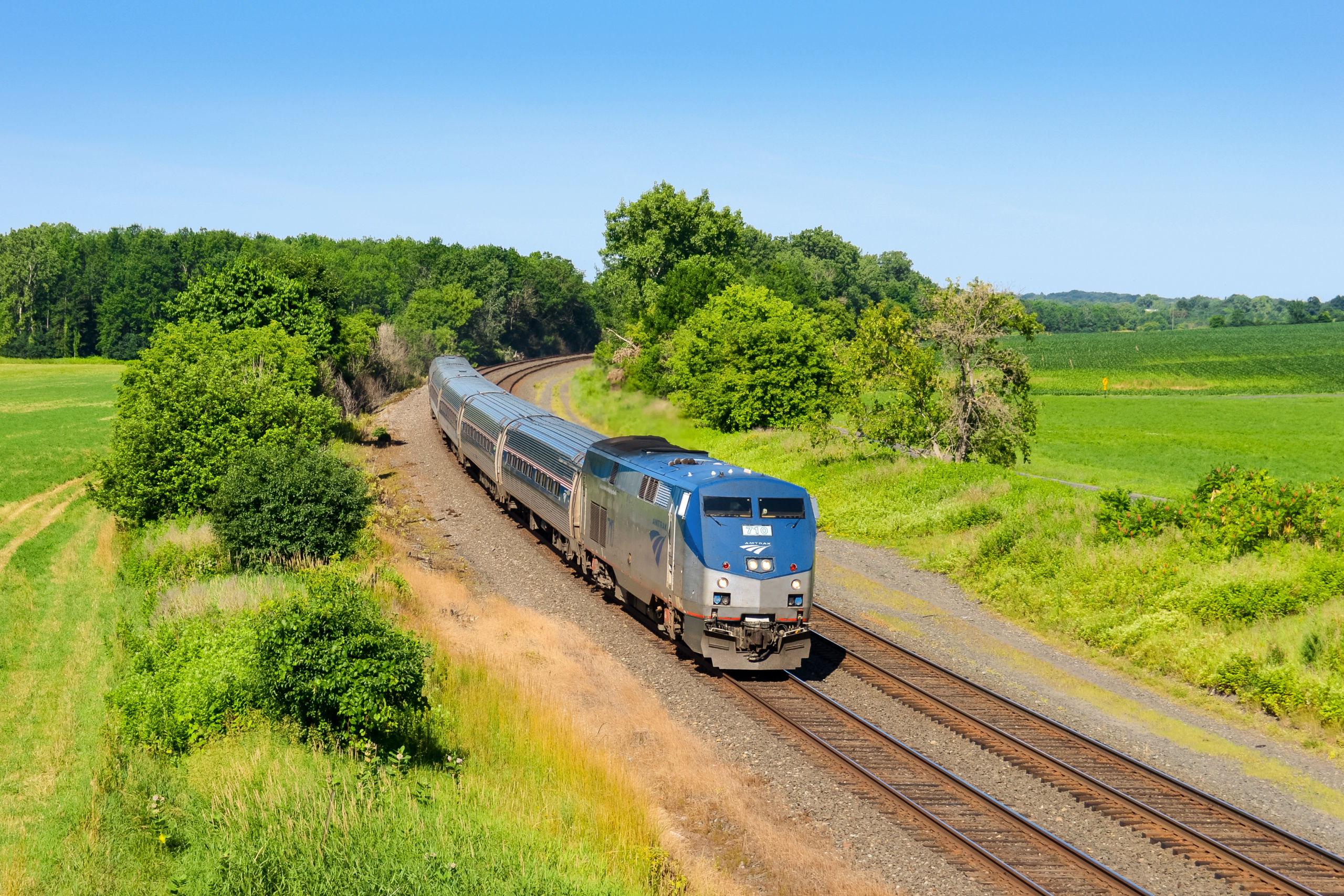
According to the 2021 U.S. Department of Energy Data Book, Amtrak is 46% more energy-efficient than traveling by car and 34% more energy-efficient than domestic air travel. Amtrak has significantly reduced its carbon footprint by taking measures to reduce fuel consumption, such as installing new forms of green technology and adapting energy-conserving practices. These practices include the installation of lighter train cars, the use of diesel fuel, a regenerative braking system, and an operating system that reduces time spent idling. According to Climate Counts, a nonprofit organization that grades companies according to their environmental practices, Amtrak is a “Striding” company. This means that they have consistently improved on their environmental record, and are a good choice for those looking to support eco-friendly businesses.
What is a Carbon Footprint?
A carbon footprint is a measure of the effect you have on the climate in terms of the number of greenhouse gases you produce (measured in units of carbon dioxide). Many of your daily activities generate carbon emissions which have an impact on the health of the environment. Rail is your greenest choice!
What is a Carbon Footprint?
A carbon footprint is a measure of the effect you have on the climate in terms of the number of greenhouse gases you produce (measured in units of carbon dioxide). Many of your daily activities generate carbon emissions which have an impact on the health of the environment. Rail is your greenest choice!
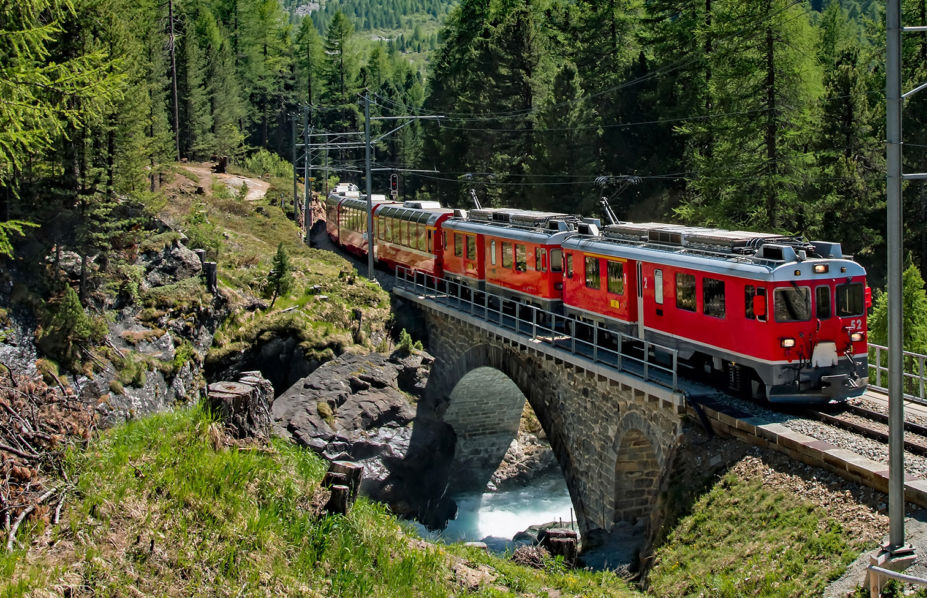
European Trains
European trains are highly sustainable.
Thanks to the prevalence of railways throughout the continent, European trains are highly sustainable. Trains are the primary form of intercity and international travel in Europe, and many of the things that make rail so popular also make it environmentally friendly. For one, many of the European lines are slower, regional trains that make frequent stops. Though high-speed rail is certainly faster, it requires far more fuel and ends up being less energy efficient than the older models. Train stations are also generally centrally located within a city, meaning that a traveler will not need a second form of transportation to get to their final destination, as is the case with airports.
European Trains
European trains are highly sustainable.
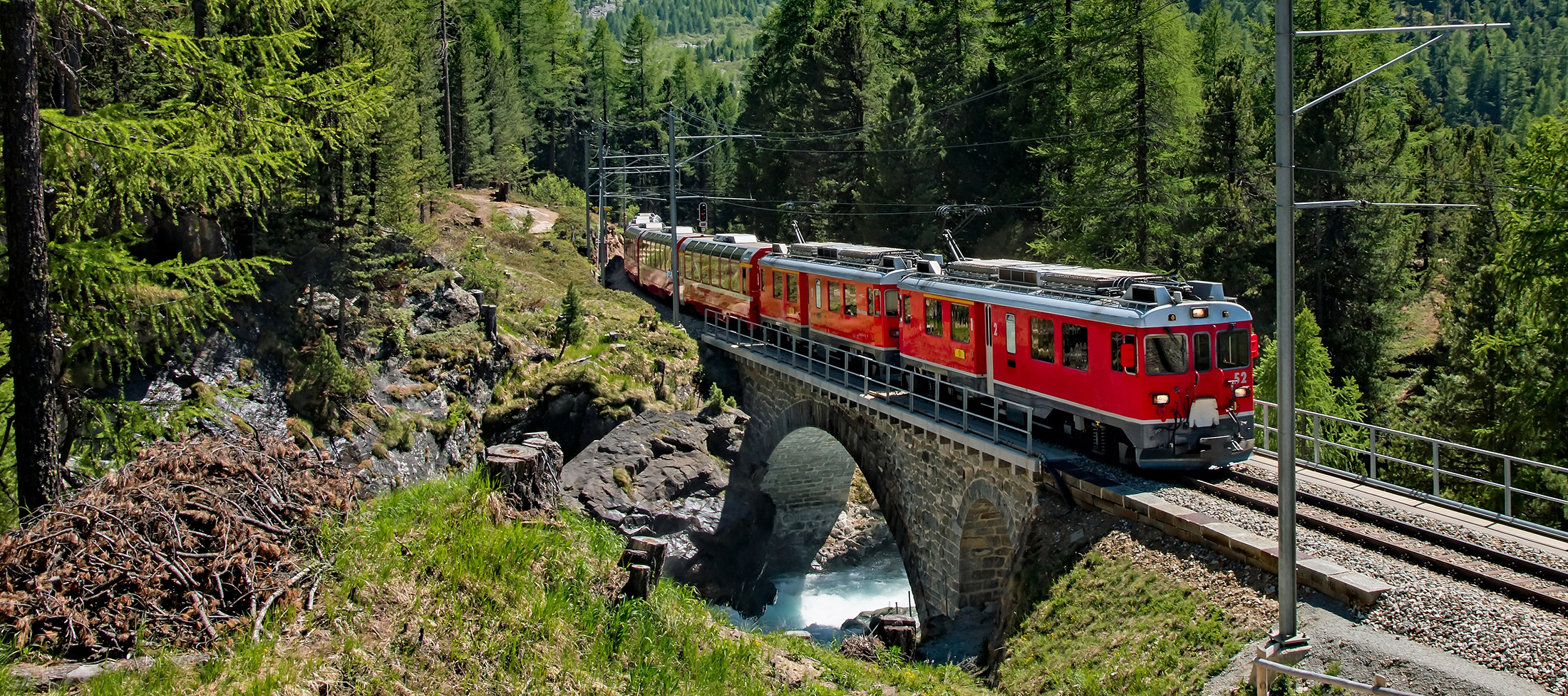
Thanks to the prevalence of railways throughout the continent, European trains are highly sustainable. Trains are the primary form of intercity and international travel in Europe, and many of the things that make rail so popular also make it environmentally friendly. For one, many of the European lines are slower, regional trains that make frequent stops. Though high-speed rail is certainly faster, it requires far more fuel and ends up being less energy efficient than the older models. Train stations are also generally centrally located within a city, meaning that a traveler will not need a second form of transportation to get to their final destination, as is the case with airports.



